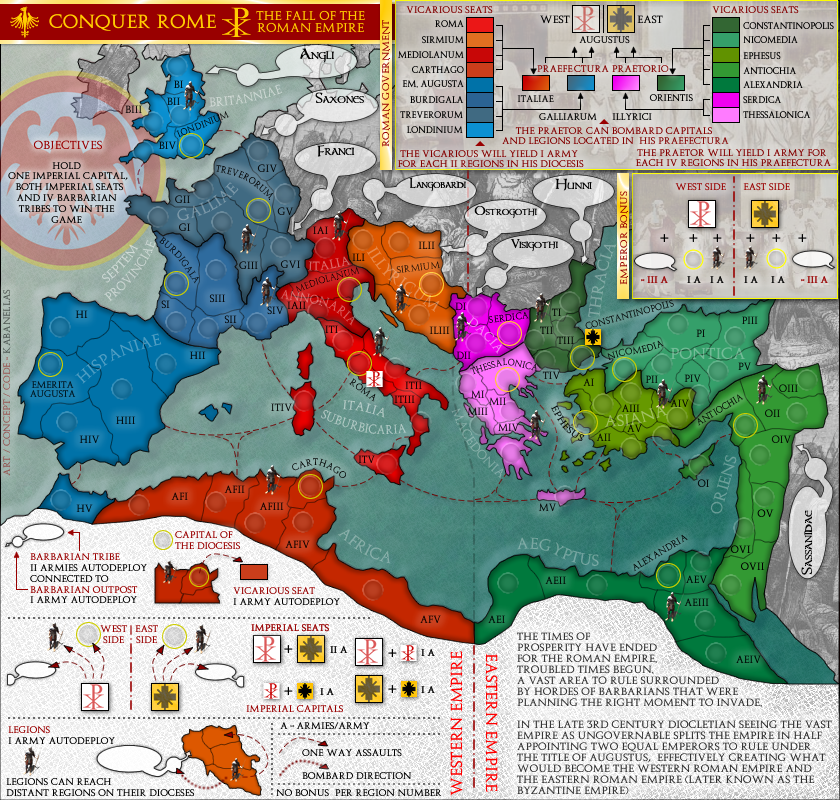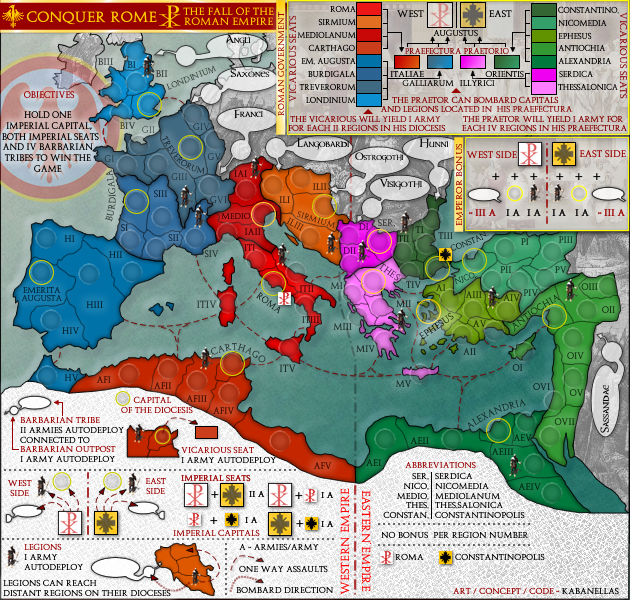





I’ve been wanting to make a Roman Empire map for quite a long time.
One map that could capture the problems and challenges faced by the Empire in the late 3rd century and all throughout the 4th:
Civil wars, political internal divisions, Barbarian invasions, the decline of the centralized power on Rome and eventually its fall by the hands of the Ostrogoths.
To do that I’ve based this project on the Roman Empire after Diocletian – which he divided in two large areas: The Western Roman Empire with capital on Rome and the Eastern Roman Empire with Constantinople as its capital.
Two emperors ruled together under the title of Augustus
The Empire was also divided into 4 quarters (Praefectura Praetorio) for administrative purposes:
-Italiae
-Galliarum
-Illyrici
-Orientis
Each Prefecture was governed by a Praetor also called Caesar, who's mission was to assist the Augustus in government affairs.
These Prefectures were subdivided in several Diocesis that were ruled by a Vicarius.
The Game board – Conquer Rome
There will be 8 starting positions – the Barbarian Tribes. All other regions will be randomly distributed between all players with the exception of regions with Legions on them, Barbarian Outposts and all Administrative seats in the Roman government.
The administration hierarchy is represented in the map and plays a vital part in the gameplay.
There will be NO bonus without owning one or more places there.
The game can be won by objectives, those would be:
-Holding one Imperial Capital (Rome or Constantinople)
-Holding both Imperial seats (both Augustus from West and East)
-Holding four Barbarian tribes
http://i998.photobucket.com/albums/af10 ... ll_img.png
XML- http://www.freewebs.com/kabanellas/Conquer_Rome_V1.6a.xml
Large map- http://i998.photobucket.com/albums/af105/Kabanellas/ConquerRome_Beta4_img.png
Small map- http://i998.photobucket.com/albums/af105/Kabanellas/ConquerRome_Beta3c_small_img.png
Large map
Small map
Starting Neutrals - Tribes are starting position (non-attributed will start with 8 neutral troops)
(a few) Previous versions
http://i998.photobucket.com/albums/af105/Kabanellas/ConquerRome3_img.png
http://i998.photobucket.com/albums/af105/Kabanellas/ConquerRome6_img.png
http://i998.photobucket.com/albums/af105/Kabanellas/ConquerRome7a_img.png
http://i998.photobucket.com/albums/af105/Kabanellas/ConquerRome_Beta3a_small_img.png










































































































